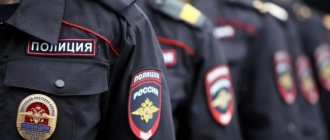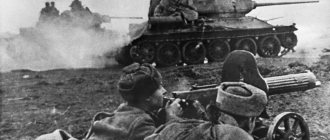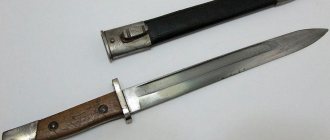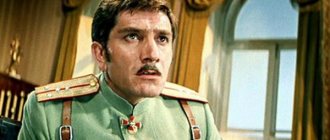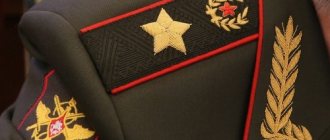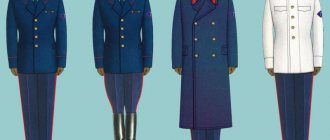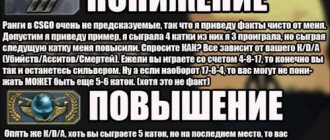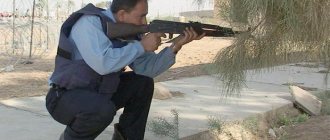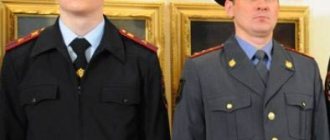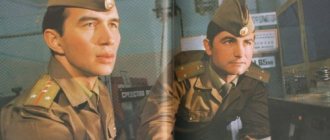Special ranks can be awarded to citizens of the Russian Federation who are employees of structural units of the Ministry of Internal Affairs. Regular and commanding traffic police officers can count on receiving them. The names of special ranks practically coincide with the names of military ranks. Only the corporal and the marshal are missing. For the management staff of the Ministry of Internal Affairs structure, special ranks are appointed for life. When an employee is dismissed, the prefix “retired” is added to the name of the status. A person may be deprived of his title in accordance with the procedure established by legal acts.
What special titles are assigned to employees?
To subordinate the personnel of the department, the concept of rank was introduced. Military ones are relevant for the FSB and the armed forces. For all other structures, special ones are used. The name of the identifier emphasizes that it is not military, but is used only in certain departments. The special rank is retained when an employee is transferred from law enforcement agencies to military service, taking into account legal requirements. Traffic police officers can be assigned special ranks of the appropriate level of composition:
- Private;
- Junior commander - from sergeant to warrant officer;
- Middle commander - lieutenants and captains;
- Senior commander - from major to colonel;
- The highest commander is generals of all categories.
Each is assigned subject to corresponding years of service. To obtain the status of private, you must serve in the position for at least one year. All others are assigned on merit, subject to appropriate length of service and education. In some situations, employees have to receive it without leaving work. You can become a junior sergeant in a year, a sergeant in 2 years, and a senior sergeant in 3 years. You can only count on the rank of ensign if you have served for five years. The special rank of junior lieutenant can be awarded after serving for one year, lieutenant - for 2 years, senior lieutenant - for 3 years, and captain - also for 3 years. For senior management, the limits are set at 4-5 years. The parameter is not regulated for senior management.
Length of service
To be awarded the next rank in the Ministry of Internal Affairs, the following number of years will be required, depending on the current rank of private and junior sergeant:
- privates and junior sergeants - one year;
- sergeants - two;
- senior sergeant - three;
- ensign - five.
For middle management, similarly (in years):
- junior lieutenant - one;
- lieutenants - two;
- senior lieutenant and captain - three each.
To advance in position, senior management will have to serve in the following years:
- major - four;
- Lieutenant Colonel - five.
For representatives of the generals and colonels, two years of service in the established rank are required, and for the position held - at least a year, after which a proposal from higher management for promotion is possible. There is no minimum length of service established for senior warrant officers and petty officers.
The assignment of ranks can be made according to the position held in the structure of the Ministry of Internal Affairs and length of service, or in an extraordinary manner in the presence of personal merits and high achievements of the police officer. Reduction of rank or deprivation of it is also possible in the opposite situation - in case of behavior unworthy of a representative of a state law enforcement agency. An employee's promotion may be canceled if:
- criminal prosecution;
- official sanction, and in other cases of a disciplinary nature.
A subsequent increase is possible if the noted facts are refuted by a decision of the body authorized to take such actions.
Legislative regulation
The list of ranks and regulations for their assignment are discussed in Federal Law No. 342 of November 30, 2011 “On Service in the Internal Affairs Bodies.” The law determines that the first ranks, which have a special status for persons who occupy positions classified as middle and senior management, are assigned by the Minister of Internal Affairs of the Russian Federation. A similar procedure is applied when assigning the next rank of colonel,
If an employee has committed a serious crime, he will automatically lose his special rank. This procedure is regulated by the Criminal Code of the Russian Federation. It is applicable when the fact of an offense is recorded by authorized employees, the opening of judicial proceedings on it, during which the guilt of the defendant is confirmed and a decision is made to convict him.
Successive ranks are assigned sequentially after the expiration of a time period regulated as necessary for serving in the previous special rank. When moving up the career ladder, management pays special attention to the education of the applicant for promotion. The law defines the possibility of early assignment for certain acts committed for the benefit of the state, provided that at the time such grounds arise, the employee served in the previous rank for more than half the required period.
Picture with shoulder straps
To make it easier to understand, look at the picture below:
Here I divided the shoulder straps into two rows for clarity, so let’s follow. In the first row (top), from left to right, we have the following titles:
- Police Private;
- Lance Sergeant;
- Sergeant;
- Staff Sergeant;
- Police Sergeant;
- Police ensign;
- Senior Warrant Officer;
All of this was junior command, with the exception of the “private”, of course. The second row is much more interesting, since the ranks of the middle and senior squads are represented here. Also from left to right, bottom row:
- Junior police lieutenant;
- Lieutenant;
- Senior Lieutenant;
- Police Captain;
- Police Major;
- Lieutenant colonel;
- Police Colonel.
The last three belong to the senior command staff, the rest to the middle. Now you will be aware if an employee suddenly stops you and demands something from you. You can determine his rank by his shoulder straps.
Rank attributes
Each type of special rank has its own attributes, expressed in insignia and shoulder straps. Among ordinary employees they do not have any distinctive features. At the same time, cadets of educational institutions have the letter “K” as their identification mark on their shoulder straps. Sergeants are distinguished by the presence of rectangular stripes of metallic or golden color. On the shoulder straps of warrant officers, stars are placed vertically - the warrant officer has two, the senior warrant officer has three, as shown in Figure 1.
Figure 1 — Russian police shoulder straps in 2022
The average command staff has small stars on the vertical stripe. The senior management team has two gaps and large stars, while the senior staff has no gaps on their shoulder straps, and the large stars are located vertically. In addition to the standard attributes, the shoulder straps use removable emblems in the form of a sword pointing downward and covered with a shield. They are usually attached to the collar of a jacket or winter coat.
Shoulder straps and ranks of Russian police officers
The policemen's shoulder straps still repeat the appearance and insignia that existed during the times of the police. However, many citizens did not understand these asterisks, and now continue to be in blissful ignorance of who is in front of them - a police lieutenant colonel or a junior sergeant.
The ranks and shoulder straps are practically no different from those in the army. With the navy, of course, everything is somewhat different.
Rank insignia of Russian police officers in pictures with explanations
Rank and file
does not have insignia on his shoulder straps (see picture on the left).
The only exception is cadets of police educational institutions, who have the letter “K” on their shoulder straps. Junior command staff - sergeants and warrant officers. Sergeants have insignia on their shoulder straps in the form of rectangular stripes, on false shoulder straps they are metallic in color, and on regular ones they are golden in color. The shoulder straps of ensigns have insignia in the form of small stars located vertically. Shoulder straps are similar to privates and sergeants; the color of the stars is determined in the same way as the color of the stripes. The average commanding staff
- from junior lieutenant to captain - have one vertical stripe on their shoulder straps, the so-called “clearance”. There is no clearance on the false shoulder straps. The stars are small.
Senior commander
(major, lieutenant colonel and colonel) composition has two gaps on the shoulder straps and large stars; there are no gaps on the false shoulder straps.
Generals, senior police officers
, have shoulder straps with vertically located, like ensigns, large-sized stars. Shoulder straps without gaps.
Russian police emblems
Police emblems in the form of a sword pointing downwards and covered with a triangular, so-called “English” shield, are used as emblems on removable shoulder straps and collars of a tunic and winter coat.
What ranks do traffic police officers receive?
The ranks were introduced in the department for the purpose of subordination. Military ranks apply to employees in the FSB and the Armed Forces. In other structures, including the traffic police, there are special ranks. The identifier indicates that the rank is not military, but is used only in certain specific departments. It persists if an employee is transferred from the security forces to serve in a military structure. The traffic police may be awarded the following titles:
- Private.
- Junior manager. These special ranks range from sergeant (including junior and senior) to warrant officer (including senior).
- Average manager. These include captains and lieutenants (including junior and senior).
- Senior manager. They can be majors, lieutenant colonels, colonels.
- Senior manager. These are all generals (major general, lieutenant general, colonel general).
Each rank is obtained after serving for a certain period of time (length of service). To acquire 1st status, you must serve in the traffic police for at least 1 year. Further titles are received based on merit, length of service, and also upon graduation from a higher specialized educational institution.
Sometimes employees receive them directly on duty. A junior sergeant will become a sergeant after 24 months, and a sergeant will become a senior sergeant after 36 months. You can become a warrant officer after serving for at least 5 years.
Further, you can become a junior lieutenant in 12 months, a lieutenant in 24 months, a senior lieutenant and captain in 36 months. You can reach senior management in four to five years. There is no time limit for senior staff.
Police ranks and shoulder straps of the Ministry of Internal Affairs of the Russian Federation
The Ministry of Internal Affairs of the Russian Federation is one of the main law enforcement agencies in our state. The Ministry of Internal Affairs assigns positions or special titles to its employees, guided by where and in what department the employee works.
The law of the Russian Federation describes periods of length of service in special ranks, which almost correspond to military ranks, only marshal and corporal are missing. In addition to the rank, the words “police” and “retired” are written.
Police officers are divided into five constituent ranks from private to general.
All employees of the Ministry of Internal Affairs with special ranks are required to wear a uniform and insignia.
Shoulder straps are considered insignia. They are on the shoulders and show what rank the policeman is. To properly understand the differences, you need to look at the shoulder straps, determine the number of stars, size and how they are located.
More detailed information about the ranks is provided below.
Senior management
This officer rank includes generals.
In ascending order they include:
- Major General - one big star on his shoulder straps.
- Lieutenant General - 2 large stars located vertically.
- Colonel General - three large stars placed vertically.
- Police General of the Russian Federation - the emblem of the Ministry of Internal Affairs in the form of a double-headed eagle at the inner edge and one very large star (from July 20, 2015, the emblem was changed by Post. Pr. No. 1147 of November 3, 2014 - there were 4 large stars). In 2015, in Russia, this title was awarded for the first time to the Minister of the Ministry of Internal Affairs of the Russian Federation V.A. Kolokoltsev. This is the highest rank of the Ministry of Internal Affairs.
Conditions for obtaining titles are the required length of service. It is added to the previous length of service, five years each for the first and second ranks from the above list. The third and fourth ranks from the list are appointed only by the president of the country.
